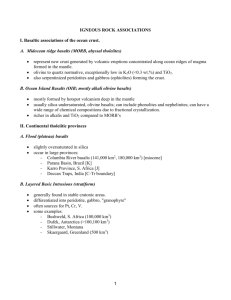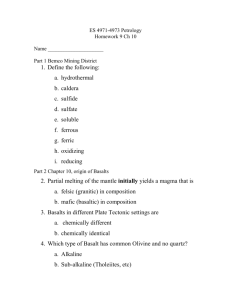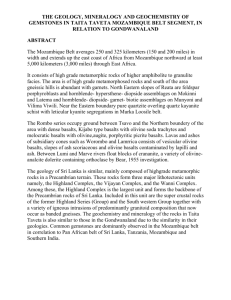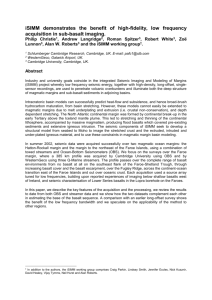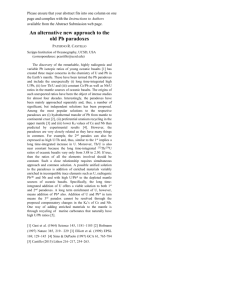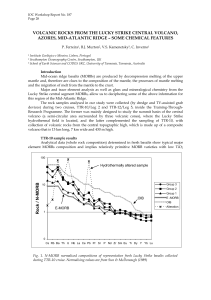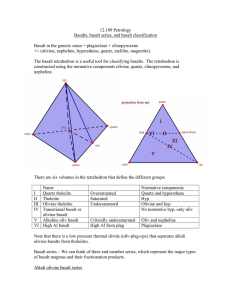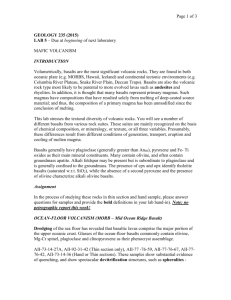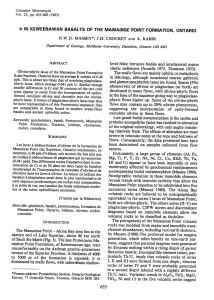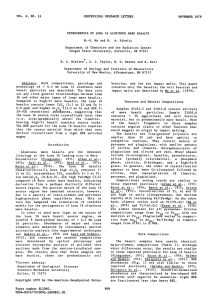Basalts
advertisement
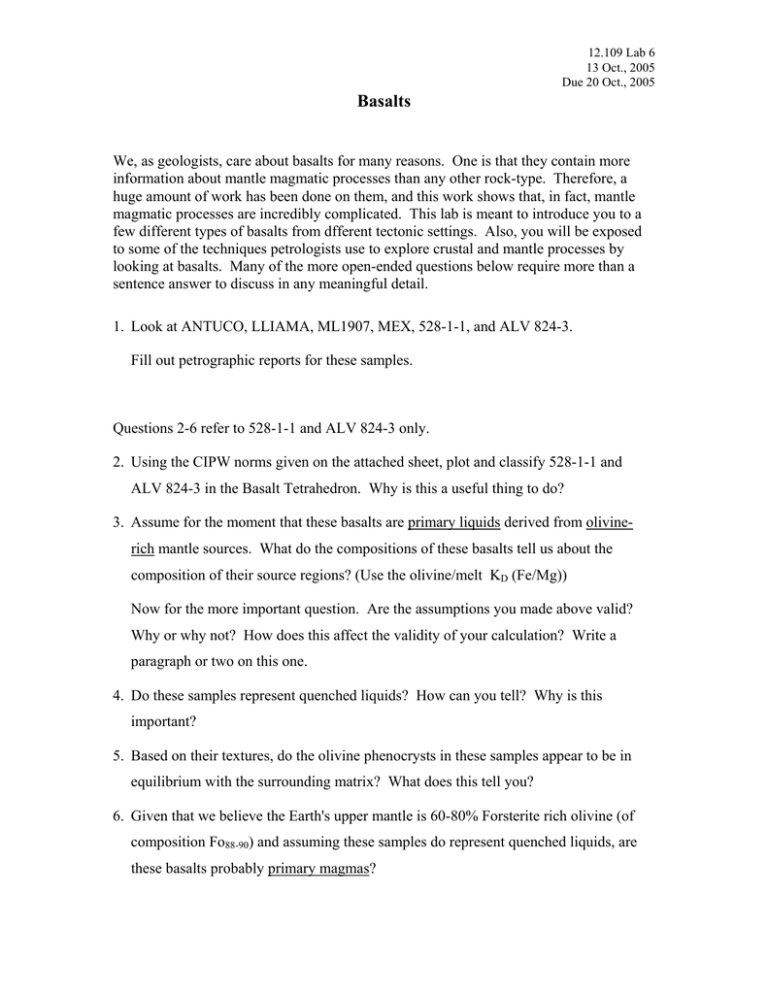
12.109 Lab 6 13 Oct., 2005 Due 20 Oct., 2005 Basalts We, as geologists, care about basalts for many reasons. One is that they contain more information about mantle magmatic processes than any other rock-type. Therefore, a huge amount of work has been done on them, and this work shows that, in fact, mantle magmatic processes are incredibly complicated. This lab is meant to introduce you to a few different types of basalts from dfferent tectonic settings. Also, you will be exposed to some of the techniques petrologists use to explore crustal and mantle processes by looking at basalts. Many of the more open-ended questions below require more than a sentence answer to discuss in any meaningful detail. 1. Look at ANTUCO, LLIAMA, ML1907, MEX, 528-1-1, and ALV 824-3. Fill out petrographic reports for these samples. Questions 2-6 refer to 528-1-1 and ALV 824-3 only. 2. Using the CIPW norms given on the attached sheet, plot and classify 528-1-1 and ALV 824-3 in the Basalt Tetrahedron. Why is this a useful thing to do? 3. Assume for the moment that these basalts are primary liquids derived from olivinerich mantle sources. What do the compositions of these basalts tell us about the composition of their source regions? (Use the olivine/melt KD (Fe/Mg)) Now for the more important question. Are the assumptions you made above valid? Why or why not? How does this affect the validity of your calculation? Write a paragraph or two on this one. 4. Do these samples represent quenched liquids? How can you tell? Why is this important? 5. Based on their textures, do the olivine phenocrysts in these samples appear to be in equilibrium with the surrounding matrix? What does this tell you? 6. Given that we believe the Earth's upper mantle is 60-80% Forsterite rich olivine (of composition Fo88-90) and assuming these samples do represent quenched liquids, are these basalts probably primary magmas? 12.109 Lab 6 13 Oct., 2005 Due 20 Oct., 2005 7. Look at thin section (2)129-KB and its associated hand sample. These are Komatiites displaying spinifex texture. Sketch an example of this texture as seen in thin section. 8. Of the basalt thin sections in the box, find and sketch examples of intergranular, intersertal, and hyalopolitic textures. Arrange the samples in order of cooling rate, fastest cooled first. 9. ANTUCO and LLIAMA are basalts from a continental arc setting. C ompare and contrast these rocks with ML1907 (a hawaiian basalt) and 528-1-1 (a MORB). Could you tell what tectonic setting the basalt came from simply by looking at a thinsection? If not, then what techniques would you use (I ask this because in many nonmodern volcanic rocks, learning more about the tectonic setting is the goal of the study, and not a given)? What might you expect to find?
